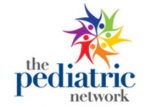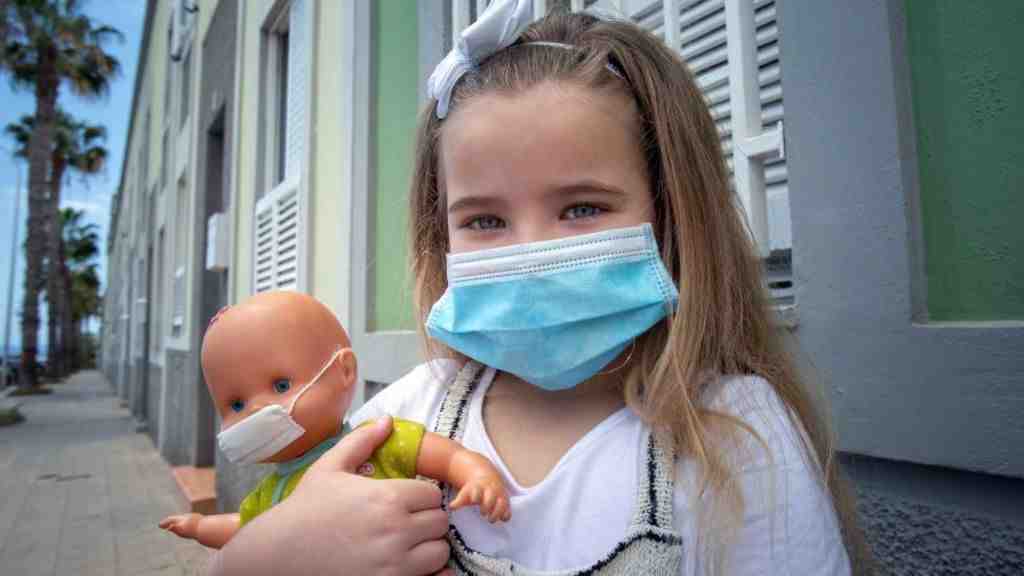What is the risk of children becoming sick with COVID-19?
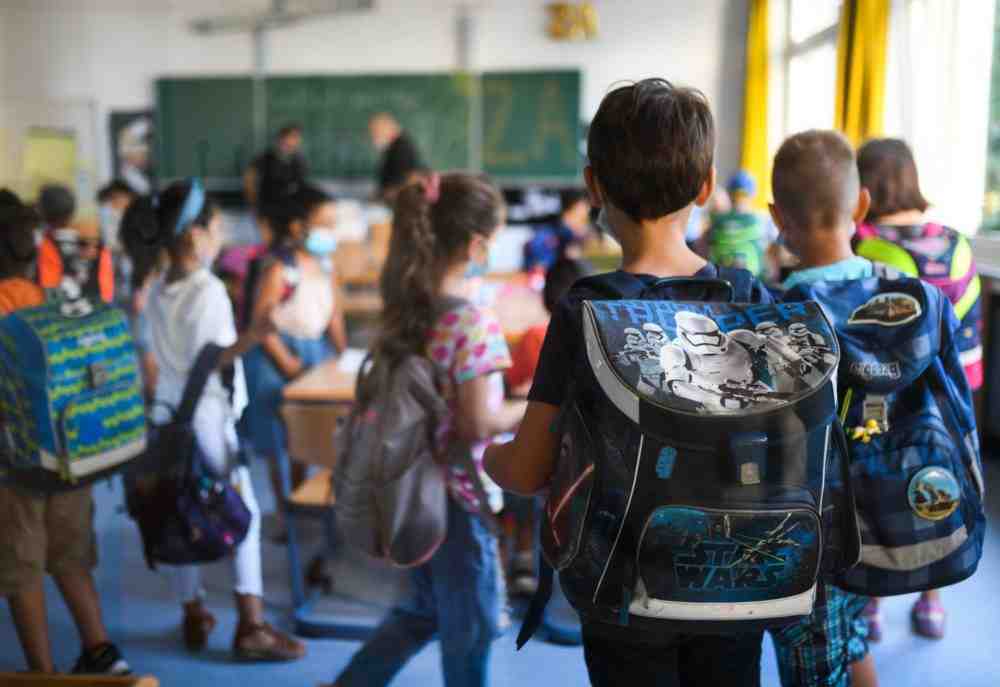
Coronavirus disease (COVID-19) can directly and indirectly affect children and young people. Beyond getting sick, the social, emotional and mental well-being of many young people has been affected by the pandemic. The traumas they face at this stage of development can continue to affect them throughout their lives.
Although children have been less affected by COVID-19 compared to adults, children can become infected with the virus that causes COVID-19 and some children develop serious illnesses. Children with underlying medical conditions have a higher risk of serious illness compared to children without underlying medical conditions.
Similar to adults, children with severe COVID-19 may develop respiratory failure, myocarditis, shock, acute renal failure, coagulopathy, and multi-organ system failure. Some children with COVID-19 have developed other serious problems such as invagination or diabetic ketoacidosis.
Evidence from several studies suggests that children and adolescents may be less infected with SARS-CoV-2 than adults. The proportion of infected people among people exposed to SARS-CoV-2 is a measure of susceptibility to infection.
Can you contract the coronavirus disease from a package in the mail?
Surfaces can be contaminated with potential microorganisms and pathogens. However, many of these surfaces are generally not directly associated with the transmission of infections to health care workers or patients. The transfer of pathogens from environmental surfaces is mainly due to hand contact with the surface (e.g., frequently touched surfaces). Tactile contamination can cause cross-contamination of patient care items, other environmental surfaces, self-contamination, and possible infections after touching the face or mouth.
The likelihood of an infected person contaminating commercial goods is low and the risk of catching the virus that causes COVID-19 from a package that has been transported, traveled, and exposed to different conditions and temperatures is also low.
There is no evidence that people can get COVID-19 to eat food. However, sharing utensils and congregating around food service areas can present risks. If food is offered at any meeting or event, have pre-packaged bags or individual bags instead of a potluck, buffet or family meal.
Coronaviruses on surfaces and objects die naturally within a few hours or days. Warmer temperatures and exposure to sunlight will reduce the time the virus survives on surfaces and objects. Normal routine cleaning with soap and water removes germs and dirt from surfaces.
Are masks effective against the coronavirus disease?
Masks can help prevent people with COVID-19 from spreading the virus to other people. The CDC recommends people wear face masks in public settings, especially when other measures of social distancing are difficult to maintain. Wearing a face mask can limit exposure to respiratory drops and large particles and can help prevent people with COVID-19 from spreading the virus.
If worn properly, a surgical mask is intended to help block drops of large particles, splashes, sprays, or splashes that may contain germs (viruses and bacteria), preventing it from reaching the mouth and nose. Surgical masks can also help reduce the exposure of saliva and respiratory secretions to others.
In many circumstances, fabric masks or masks for medical procedures work well for community use. Examples may include: â— Talk to neighbors when you are outdoors and at least six feet awayâ— Go to a park, as long as you can stay at least six feet away. people who do not live with you For situations where you are in close contact with people who do not live with you, a mask option that provides a higher level of protection (improved fit and / or improved filtration) These situations may include: go to the grocery store, visit the doctor, work in a workplace where you are exposed to people who don’t live with you and who can’t always keep at least six feet away. away from others
CDC recommends wearing fabric facials as a measure of protection, in addition to social distancing (i.e., staying at least 6 feet away from others). Fabric facial covers can be especially important when social distancing is not possible or viable depending on working conditions. A cloth facial cover can reduce the amount of large breath drops a person spits out when talking, sneezing, or coughing. Cloth facials can prevent people who don’t know they have the virus that causes COVID-19 from transmitting it to other people.
Is Hydroxychloroquine approved to treat the coronavirus disease?
Current research suggests that hydroxychloroquine is neither safe nor effective for the treatment of patients with COVID-19 (as of October 8, 2020). At the beginning of the pandemic, patients may have received hydroxychloroquine under emergency use authorization, but it did not reduce morbidity or mortality. The FDA announced a warning about the use of hydroxychloroquine with COVID-19 outside the hospital due to the risk of heart rhythm problems (source). Hydroxychloroquine during this pandemic has taught scientists to be more cautious in using drugs as emergency treatments without trial testing (source). The best way to learn how to treat COVID-19 is to conduct randomized controlled clinical trials, but many hydroxychloroquine studies have stopped early for safety reasons.
Veklury is the first treatment for COVID-19 to receive FDA approval.
Remdesivir is an FDA-approved intravenous antiviral drug (and sold under the brand name Veklury) for use in adult and pediatric patients 12 years of age and older and weighing a minimum of 40 kilograms (approximately 88 pounds) for the treatment of COVID- 19 hospitalization.
The FDA has approved the antiviral drug remdesivir (Veklury) to treat COVID-19 in hospitalized adults and children 12 years of age or older in hospital. The FDA has granted an emergency use authorization for the rheumatoid arthritis drug baricitinib (Olumiant) to treat COVID-19 in some cases.
Should I disinfect children’s books to prevent coronavirus disease?
Cleans and disinfects surfaces and things you often touch, such as tables, chairs, door knobs, light switches, elevator buttons, handrails, counters, remote controls, shared electronic equipment, shared exercise equipment, handles , desks, telephones, keyboards, sinks, faucets, and sinks.
SARS-CoV-2 can be reduced and killed on surfaces, objects and hands if used properly. Cleaning and disinfection can reduce the risk of spreading the infection by reducing and killing germs on surfaces that people frequently touch.
Hand sanitizers are not intended to replace hand washing in food production and sales environments. Instead, hand sanitizers can be used in addition to or in combination with a proper hand wash. CDC recommends that everyone wash their hands with soap and plain soap. Alcohol-based hand sanitizers can be used without soap and plain soap. As a tentative measure, we understand that some food establishments have established stations and sprays for manual immersion of quaternary ammonium at a concentration of 200 ppm. The FDA is aware of reports of adverse events from consumers using these products as substitutes for hand sanitizers and discourages the use of these products as substitutes for hand sanitizers.
CDC, in collaboration with EPA, expects all N-listed products: Coronavirus Disinfectants (COVID-19) to kill all strains of SARS-CoV-2, the virus that causes COVID-19. COVID-19 genetic mutations do not affect the effectiveness of disinfectants. The destruction of a virus depends on its physical properties, and recent genetic changes have not changed the basic physical properties of the virus that causes COVID-19.
Can antibiotics treat the coronavirus disease?
Antibiotics do not work against viruses; they only work in bacterial infections. Antibiotics do not prevent or treat COVID-19, because COVID-19 is caused by a virus, not bacteria.
Most people who become ill with COVID-19 will only experience mild illnesses and can recover at home. Symptoms can last for several days and people with the virus may feel better in about a week. Treatment is aimed at relieving symptoms and includes rest, fluid intake and painkillers.
Remdesivir is an FDA-approved intravenous antiviral drug (and sold under the brand name Veklury) for use in adult and pediatric patients 12 years of age and older and weighing a minimum of 40 kilograms (approximately 88 pounds) for the treatment of COVID- 19 hospitalization.
Most people with mild cases seem to recover in a week or two. However, recent surveys conducted by the CDC found that recovery may take longer than previously thought, even in adults with milder cases that do not require hospitalization.
How can COVID-19 affect children and young people?
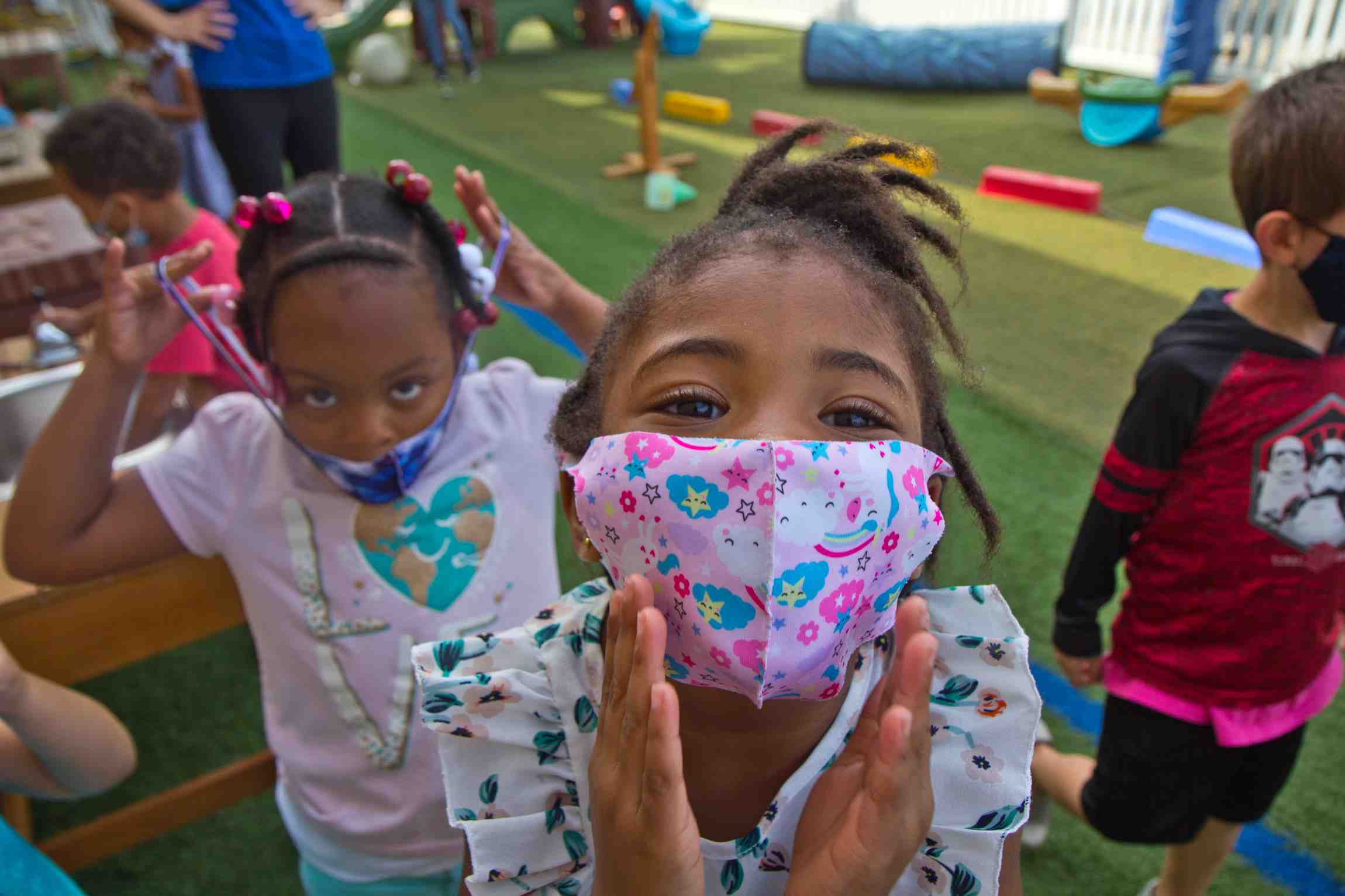
Coronavirus disease (COVID-19) can affect young children, up to five years of age, directly or indirectly. Beyond getting sick, the social, emotional, or mental well-being of many young children has been affected by the pandemic. The trauma you face at this stage of development can have long-term consequences throughout your life. CDC COVID-19 Parent Resource Kit: Ensuring the social, emotional, and mental well-being of children and youth can help parents, caregivers, and other adults serving children and youth recognize children and youth. The social, emotional and mental challenges that contribute to ensuring their well-being.
Although children have been less affected by COVID-19 compared to adults, children can become infected with the virus that causes COVID-19 and some children develop serious illnesses. Children with underlying medical conditions have a higher risk of serious illness compared to children without underlying medical conditions.
COVID-19 has also caused serious illness and even death in younger, middle-aged adults who are otherwise healthy. Although most children have mild symptoms or no disease, some have become seriously ill. As with adults, even if children have no symptoms, they can spread the virus to other people.
Children with symptoms of an infectious disease should not attend school, but the length of time the child should stay home depends on the most likely etiology of the disease (COVID-19 or not). Return-to-school policies for children with COVID-19 should be based on the CDC’s recommendation to suspend home isolation. No negative test or doctor’s note should be taken to return to school after 10 days of isolation with improved symptoms.
What are some of the symptoms of COVID-19 in children?
The symptoms of COVID-19 are similar in children and adults. However, children with confirmed COVID-19 usually present with mild symptoms. Symptoms reported in children include cold-like symptoms such as fever and cough.
If you suspect that your child may have COVID-19, call the health center to notify them before taking them to see them.
â € ¢ Most babies who test positive for COVID-19 have mild symptoms or no problems. â € ¢ Serious illness has been reported in infants, but it seems uncommon. Babies with underlying medical conditions and premature babies (before 37 weeks) may be at increased risk for COVID-19 serious illness. Signs reported among newborns with COVID-19 include fever, lethargy (being too tired or inactive), runny nose, cough, vomiting, diarrhea, poor nutrition, and increased labor or shallow breathing.
Children can become infected with the virus that causes COVID-19 and can get sick with COVID-19. Most children with COVID-19 have mild or no symptoms (“asymptomatic”). Fewer children have been sick with COVID-19 compared to adults. However, children with certain underlying medical conditions and infants (under 1 year of age) may be at increased risk for severe COVID-19 disease. Some children have developed a rare but serious COVID-19-related disease called multisystem inflammatory syndrome. (MIS-C). For more information for parents or caregivers, see Children and Adolescents and the COVID-19 Parent Resource Kit.
Is a headache sign of the coronavirus disease?
It presents mainly as severe pressure pain all over the head. It is different from migraine, which by definition is unilateral throbbing with sensitivity to light or sound, or nausea. This is more of a full head pressure presentation.
Mild illness: People who have any of the various signs and symptoms of COVID-19 (e.g., fever, cough, sore throat, general malaise, headache, muscle aches) without shortness of breath, dyspnea, or abnormal chest pain.
A person may have mild symptoms for about a week and then get worse quickly. Tell your doctor if your symptoms get worse quickly in a short period of time.
People with COVID-19 have reported a wide range of symptoms, ranging from mild symptoms to severe illness. Symptoms may appear 2 to 14 days after exposure to the virus. Symptoms may include: fever or chills; Cough; shortness of breath; fatigue; muscle or body aches; headache; new loss of taste or smell; a sore throat; nasal congestion or discharge; nausea or vomiting; diarrhea.
What are some emergency warning signs for COVID-19?
Most people who receive COVID-19, the disease caused by a coronavirus called SARS-CoV-2, will only have mild illnesses. But what exactly does that mean? Mild cases of COVID-19 can still make you feel bad. But you should be able to rest at home and recover completely without making any trips to the hospital.
Most people infected with the COVID-19 virus will experience mild to moderate respiratory illnesses and will recover without the need for special treatment. Older people and people with underlying medical problems such as cardiovascular disease, diabetes, chronic respiratory disease, and cancer are more likely to develop serious illness.
respiratory problems, persistent pain or pressure in the chest, confusion or inability to wake the person, bluish lips or face.
If you have or think you may have COVID-19, it is important to stay home and away from other people. Staying away from others helps stop the spread of COVID-19. If you have an emergency warning sign (including breathing problems), get emergency medical attention immediately.
Can the coronavirus disease spread through food?
There is currently no evidence that food or food packaging is associated with COVID-19 transmission.
The USDA and the FDA share this update based on the best available information from scientific bodies around the world, including a continued international consensus that the risk is excessively low of transmitting SARS-CoV-2 to humans through food and food packaging.
The risk of infection with SARS-CoV-2, the virus that causes COVID-19, is currently thought to come from food, packaging, or food bags.
Currently, there is no evidence to suggest that food handling or food consumption is associated with COVID-19. Coronaviruses, such as those caused by COVID-19, are thought to spread primarily from person to person through respiratory droplets when someone coughs, sneezes, or speaks.
How long does COVID-19 recovery take?
Anyone who has had close contact with someone with COVID-19 should remain at home for 14 days after their last exposure to that person.
At least 4 out of 5 people with coronavirus will have mild to moderate illness and will fully recover within 2 to 4 weeks. But even if you are young and healthy, that is, the risk of serious illness is low, it does not exist.
Older people and people with many serious medical conditions are most likely to experience persistent symptoms of COVID-19, but even young people, otherwise, may feel unwell for weeks or months after infection.
Approximately 33% of COVID-19 patients who were never ill enough to require hospitalization continue to complain months after symptoms such as fatigue, loss of smell or taste, and “brain fog.” Researchers at the University of Washington (UW) found.
Can children without COVID-19 symptoms spread the virus?
A recent study found that nearly 40% of children who tested positive for COVID-19 were asymptomatic. People of all ages can be asymptomatic and can still spread the virus to other people.
You can spread COVID-19 to other people even if you don’t feel bad.
Children can become infected with the virus that causes COVID-19 and can get sick with COVID-19. Most children with COVID-19 have mild or no symptoms (“asymptomatic”). Fewer children have been sick with COVID-19 compared to adults. However, children with certain underlying medical conditions and infants (under 1 year of age) may be at increased risk for severe COVID-19 disease. Some children have developed a rare but serious COVID-19-related disease called multisystem inflammatory syndrome. (MIS-C). For more information for parents or caregivers, see Children and Adolescents and the COVID-19 Parent Resource Kit.
Children with symptoms of an infectious disease should not attend school, but the length of time the child should stay home depends on the most likely etiology of the disease (COVID-19 or not). Return-to-school policies for children with COVID-19 should be based on the CDC’s recommendation to suspend home isolation. No negative test or doctor’s note should be taken to return to school after 10 days of isolation with improved symptoms.
Are children more susceptible to severe COVID-19 illness?
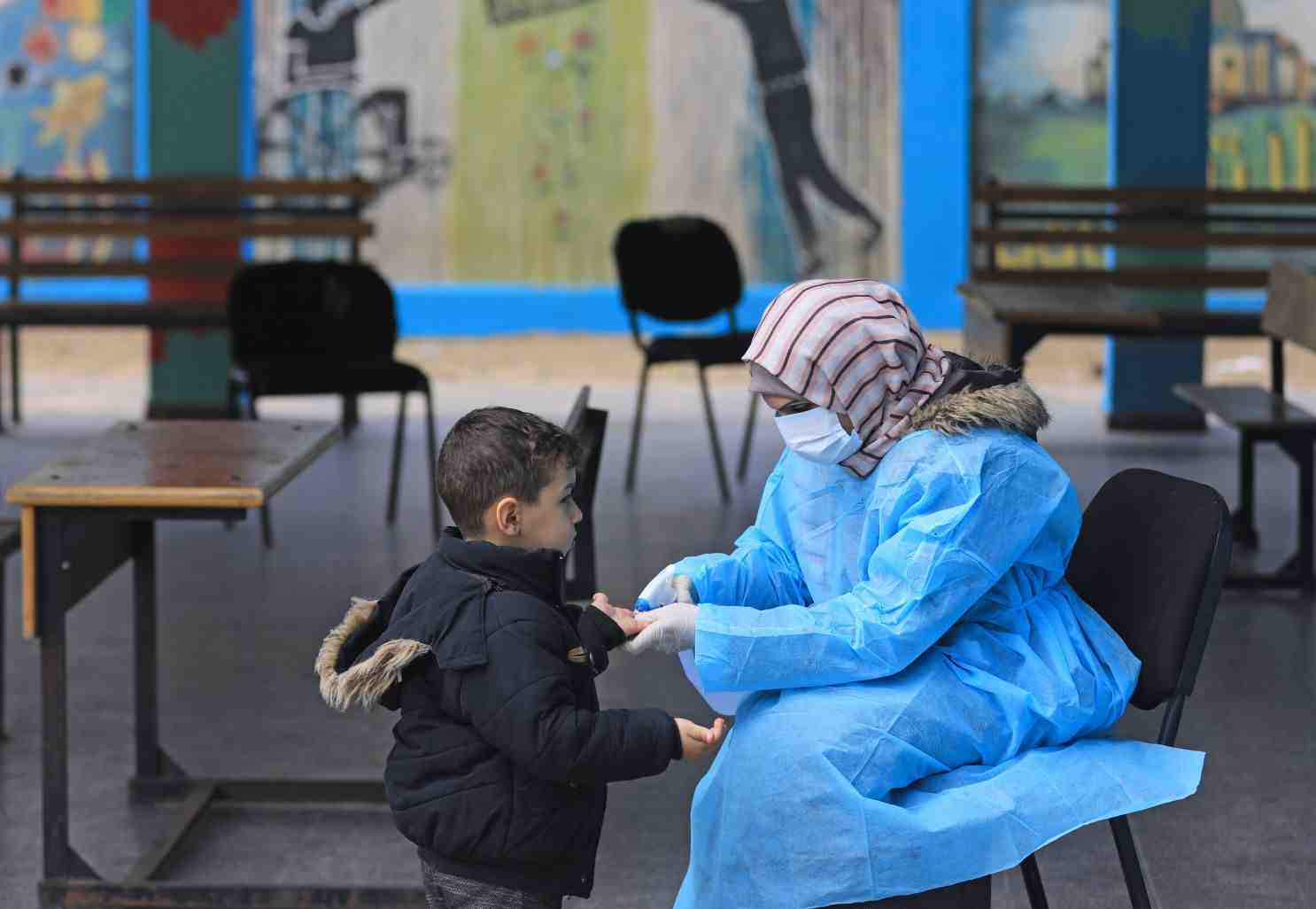
Hospitalization rates in children are significantly lower than hospitalization rates in adults with COVID-19, suggesting that children may have less severe COVID-19 disease compared to adults.
Although children have been less affected by COVID-19 compared to adults, children can become infected with the virus that causes COVID-19 and some children develop serious illnesses. Children with underlying medical conditions have a higher risk of serious illness compared to children without underlying medical conditions.
Children can become infected with the virus that causes COVID-19 and can get sick with COVID-19. Most children with COVID-19 have mild or no symptoms (“asymptomatic”). Fewer children have been sick with COVID-19 compared to adults. However, children with certain underlying medical conditions and infants (under 1 year of age) may be at increased risk for severe COVID-19 disease. Some children have developed a rare but serious COVID-19-related disease called multisystem inflammatory syndrome. (MIS-C). For more information for parents or caregivers, see Children and Adolescents and the COVID-19 Parent Resource Kit.
COVID-19 is a new disease and the CDC is learning more and more. Among adults, the risk of serious COVID-19 disease increases with age, with older adults at higher risk. Severe illness means that the person with COVID-19 may need hospitalization, intensive care, or a ventilator to help them breathe, or may even die. People of any age with certain underlying medical conditions (which now include pregnancy) are also at increased risk for serious illness from SARS-CoV-2 infection.
Can the COVID-19 be transmitted by urine or feces?
SARS-CoV-2 RNA was detected in upper and lower airway samples and SARS-CoV-2 virus was isolated from upper airway and bronchoalveolar lavage fluid samples. SARS-CoV-2 RNA has been detected in the blood and feces. and the SARS-CoV-2 virus has been isolated in cell culture from the feces of some patients, including a patient with pneumonia 15 days after the onset of symptoms.
Although there is no evidence to date for the survival of COVID-19 virus in water or wastewater, it is likely that the virus will inactivate significantly more rapidly than unwrapped human enteric viruses with transmission transmitted by known water (such as adenovirus, norovirus, rotavirus, and hepatitis A).
The virus is not known to spread in feces, urine, breast milk, food, wastewater, drinking water or through vectors of animal diseases (although some animals can contract the virus from humans. ). It is rarely transmitted from mother to baby during pregnancy.
Current studies suggested that the eye is a potential pathway for the transmission and infection of SARS-CoV-2. However, the risk of viral spread through eye secretions and tears or contracting an infection through the eye is likely to be low compared to other routes of infection, such as respiratory tissue.
Can the coronavirus disease spread through feces?
The virus is thought to be transmitted by direct contact, fomites, respiratory drops, and possibly aerosols (2). Some patients have detected viral RNA in feces and urine (3-7). Infectious urine virus has also been isolated from a patient with severe COVID-19 (8). However, it is unclear whether the feces virus is infectious and may be an additional source of transmission.
There is no evidence that COVID-19 can spread to people through water, including flood water. Sometimes flood water can be mixed with wastewater. The CDC is unaware of any scientific reports of the spread of the virus by ingestion or contact with water contaminated with feces from an infected person. Stay out of flood waters to avoid risks and diseases from pollutants that are not associated with COVID-19.
The virus that causes COVID-19 has been found in untreated wastewater. Researchers do not know if this virus can cause disease if a person is exposed to sewer systems or untreated wastewater. So far no evidence has been provided. At this time, the risk of transmission of the virus caused by COVID-19 through properly designed and maintained sewer systems is believed to be low.
Although there is no evidence to date for the survival of COVID-19 virus in water or wastewater, it is likely that the virus will inactivate significantly more rapidly than unwrapped human enteric viruses with transmission transmitted by known water (such as adenovirus, norovirus, rotavirus, and hepatitis A).
How does COVID-19 compare to the flu in children?
The symptoms of COVID-19 are similar in adults and children and may look like symptoms of other common illnesses such as colds, streptococci or allergies. The most common symptoms of COVID-19 in children are fever and cough, but children may have any of these signs or symptoms of COVID-19: fever or chills Cough Nasal congestion or runny nose New taste or smell loss Sore throat Shortness of breath or difficulty breathing Diarrhea Nausea or vomiting Headache Headache or body aches Poor appetite or malnutrition, especially in infants under 1 year of age
COVID-19 is caused by infection with a new coronavirus (called SARS-CoV-2) and the flu is caused by infection with the flu virus.
It was originally thought that people had a much higher risk of catching the flu than COVID-19. However, the virus is proving to be more infectious and, in some high-risk populations, more deadly than the flu.
COVID-19 and influenza are infectious diseases that can affect breathing and have similar symptoms, but are caused by different viruses.
Does the coronavirus disease spread through meat?
Although there is currently no evidence to suggest that COVID-19 is transmitted through food, the pandemic has affected the supply chain and consumer access to the food they seek, making the supply chain a continuum. and food availability are the top priorities of the FDA.
You should always handle and prepare food safely, including keeping raw meat separate from other foods, refrigerating perishable foods, and cooking meat at the right temperature to kill harmful germs.
The virus is not transmitted through food, it is not a pathogen transmitted by food, such as viruses and bacteria that cause what we often call “food poisoning.” This means that cold or cooked foods, such as salad or sushi, do not present any additional risk of coronavirus exposure.
There is currently no evidence that people can take COVID-19 from food. The virus that causes COVID-19 can be killed at temperatures similar to those of other known viruses and bacteria found in food.
What are the incubation period of COVID-19 in children?
Although children have been less affected by COVID-19 compared to adults, children can become infected with the virus that causes COVID-19 and some children develop serious illnesses. Children with underlying medical conditions have a higher risk of serious illness compared to children without underlying medical conditions.
Children can become infected with the virus that causes COVID-19 and can get sick with COVID-19. Most children with COVID-19 have mild or no symptoms (“asymptomatic”). Fewer children have been sick with COVID-19 compared to adults. However, children with certain underlying medical conditions and infants (under 1 year of age) may be at increased risk for severe COVID-19 disease. Some children have developed a rare but serious COVID-19-related disease called multisystem inflammatory syndrome. (MIS-C). For more information for parents or caregivers, see Children and Adolescents and the COVID-19 Parent Resource Kit.
Our review of the latest available data indicates that, although children infected with COVID-19 are more likely to be asymptomatic and to experience fewer serious illnesses (although a small subset becomes very ill), they are able to transmit ‘ ls to the two children. and adults.
Children, such as adults, who have COVID-19 but no symptoms (“asymptomatic”) can still spread the virus to other people.
Are eye infections a sign of COVID-19?
The findings reported that only 5% of participants reported having sore eyes before having COVID-19, while 16% reported having the problem as one of their symptoms during infection.
Pink eye (conjunctivitis) may be a symptom of COVID-19. Research suggests that the most common eye problems related to COVID-19 are sensitivity to light, sore eyes, and itchy eyes.
Only 1% to 3% of people with COVID-19 will have pink eyes. If you notice that you have red eyes, chances are it is not due to the coronavirus. Call your doctor if you have red eyes with other symptoms of COVID-19.
Some early symptoms reported by some people include fatigue, headache, sore throat, or fever. Others experience loss of smell or taste. COVID-19 can cause mild symptoms at first, but then become more intense after five to seven days, with a worsening of cough and shortness of breath.
Can children get COVID-19?
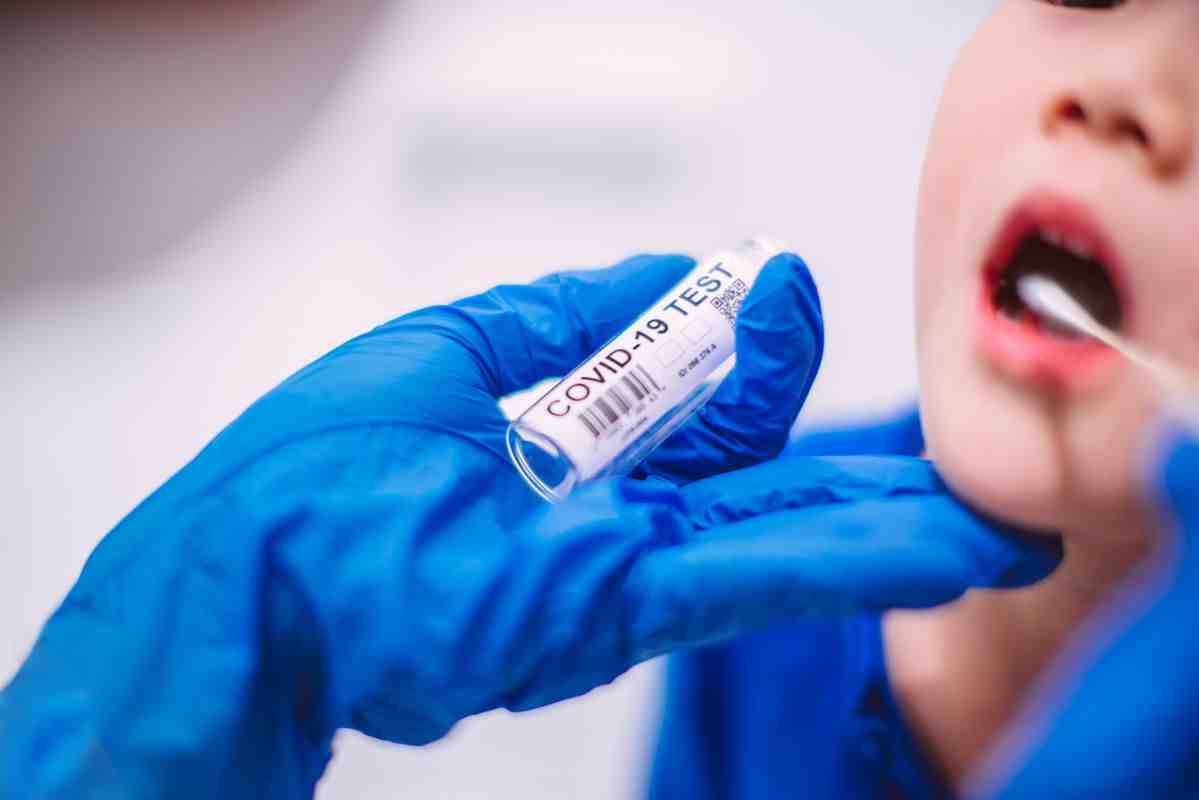
Who shouldn’t wear masks during the COVID-19 pandemic?
Masks can help prevent people with COVID-19 from spreading the virus to other people. The CDC recommends people wear face masks in public settings, especially when other measures of social distancing are difficult to maintain. Wearing a face mask can limit exposure to respiratory drops and large particles and can help prevent people with COVID-19 from spreading the virus.
Remember: masks are not about protecting the user, they are about protecting everyone. This is especially important because many carriers of the new coronavirus, up to 40%, according to a recent study, are asymptomatic and otherwise could spread the virus without even knowing it. Wearing a mask creates a barrier that prevents the spread of drops carried by the virus. Even if a cloth mask can’t catch all the drops, it still significantly reduces the drops that a carrier propels into the air around them.
Employers should encourage workers to wear a face mask or fabric-approved face mask at all times in the workplace.
What can COVID-19 do to your lungs?
The type of pneumonia often associated with COVID-19 can cause long-term damage to tiny air sacs (alveoli) in the lungs. The resulting scar tissue can cause long-term respiratory problems.
COVID-19 is a disease caused by SARS-CoV-2 that can trigger what doctors call respiratory tract infection. It can affect the upper respiratory tract (sinuses, nose and throat) or the lower respiratory tract (trachea and lungs). It spreads in the same way that other coronaviruses do, mainly through person-to-person contact.
Once in the chest, the virus begins to affect a person’s airways, causing inflammation. As the inflammation increases, a dry, barking cough develops that sounds and feels like asthma. In addition, this can cause chest tightness or deep pain while breathing.
While other types of pneumonia rapidly infect large regions of the lungs, COVID-19 begins in numerous small areas of the lungs. It then uses the lungs ’own immune cells to spread through the lungs for many days or even weeks.
Should children wear masks during the COVID-19 pandemic?
WHO and UNICEF advise children 12 years of age and older to wear a mask under the same conditions as adults, especially when they cannot guarantee a minimum distance of one meter from others and there is widespread transmission in the area.
â € ¢ You have several masks, so you can wash them daily and have your backups ready. Choose masks that fit comfortably but comfortably on the side of your face. Cover the nose and mouth completely. They are fastened with bows or earplugs. It includes several layers of fabric. Allow breathing without restrictions. machine wash and dry without damage or shape change. Clearly label your child’s masks on a permanent marker so they don’t get confused with other children’s masks. Practice with your child putting on and taking off masks without touching the cloth. â € ¢ Explain the importance of wearing a mask and how it protects other people from getting sick. Consider talking to your child about other people who may not be able to wear a mask for medical reasons (for example, asthma) .â € ¢ As a family, model with masks, especially when you are in situations where physical distancing is difficult to maintain or impossible.
Children with underlying health conditions such as cystic fibrosis or cancer should wear a medical mask in consultation with their medical providers. A medical mask provides protection to the person wearing it and prevents transmission to other people. Anyone with underlying health conditions that pose a higher risk of serious illness is recommended.
Clean and disinfect high-touch surfaces daily in common areas of the home (e.g., tables, hard-backed chairs, door knobs, light switches, remote controls, handles, desks, sinks, sinks). according to the manufacturer’s instructions.
How to sanitize N95 Masks for reuse COVID-19?
The CDC considers N95-type FFRs to be a single-use product and recommends that cleaning, decontamination, and subsequent reuse of FFRs be used only when there is a critical shortage of FFRs and should only be done with FIF approved by NIOSH without exhalation. valves.
The CDC recommends washing reusable face masks after each use and provides information on cleaning fabric face masks.
“At this time, there is no known maximum number of uses (suits) that the same face mask can be worn again.” – Not all face masks can be reused. – Facial masks that are fixed to the supplier by means of ties may not be able to be undone without tearing and should be considered only for prolonged use, rather than reuse. – Facial masks with elastic hooks may be more suitable for reuse.
The CDC does not recommend the reuse of disposable surgical masks that are intended for single use. The FDA recognizes that there may be availability issues with surgical masks during the COVID-19 public health emergency, but there are strategies for conserving surgical masks.
What should I do if my child has symptoms of COVID-19?
â € ¢ Rest. It can make you feel better and can speed up your recovery. Don’t go to work, school, or public places. ”Drink fluids. More water is lost when you are sick. Dehydration can worsen symptoms and cause other health problems. If symptoms worsen, call your doctor immediately.
Parents or caregivers who have questions about their child’s health, including concerns about COVID-19 or MIS-C, should call a pediatrician or other health care provider immediately. Healthcare providers can follow CDC recommendations to keep children and their parents or caregivers safe if a face-to-face visit is needed.
Fever Fatigue Headache Myalgia Cough Nasal congestion or rhinorrhea New loss of taste or smell Sore throat
Help the sick person follow their doctor’s instructions for care and medicine. For most people, the symptoms last for a few days and people usually feel better after a week. See if over-the-counter medications for fever help the person feel better. Make sure the sick person drinks plenty of fluids and rests. Help her shop around, fill out recipes, and get other items she needs. If possible, consider delivering the items through a delivery service. Take care of your pets and limit contact between the sick person and your pet when possible.
Are children less likely to get severely ill from COVID-19?
Children can become infected with the virus that causes COVID-19 and can get sick with COVID-19. Most children with COVID-19 have mild or no symptoms (“asymptomatic”). Fewer children have been sick with COVID-19 compared to adults. However, children with certain underlying medical conditions and infants (under 1 year of age) may be at increased risk for severe COVID-19 disease. Some children have developed a rare but serious COVID-19-related disease called multisystem inflammatory syndrome. (MIS-C). For more information for parents or caregivers, see Children and Adolescents and the COVID-19 Parent Resource Kit.
Although children have been less affected by COVID-19 compared to adults, children can become infected with the virus that causes COVID-19 and some children develop serious illnesses. Children with underlying medical conditions have a higher risk of serious illness compared to children without underlying medical conditions.
Children are underrepresented in the number of cases of coronavirus disease (COVID-19) (1,2). Gravity in most children is limited and children do not appear to be the main drivers of transmission (3,4). However, severe acute respiratory syndrome coronavirus 2 (SARS-CoV-2) infects children of all ages (1,3).
Coronavirus disease (COVID-19) can directly and indirectly affect children and young people. Beyond getting sick, the social, emotional and mental well-being of many young people has been affected by the pandemic. The traumas they face at this stage of development can continue to affect them throughout their lives.
